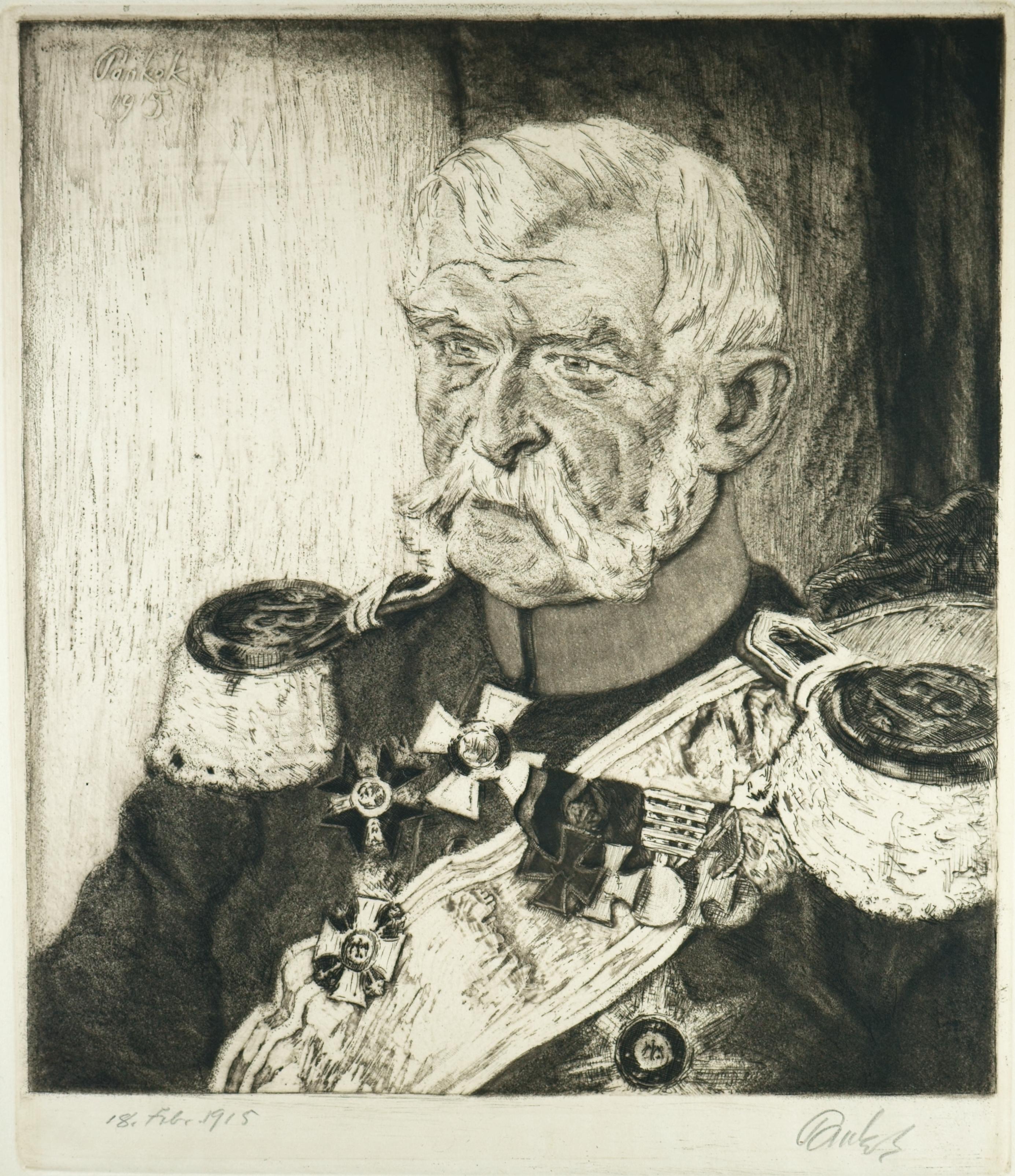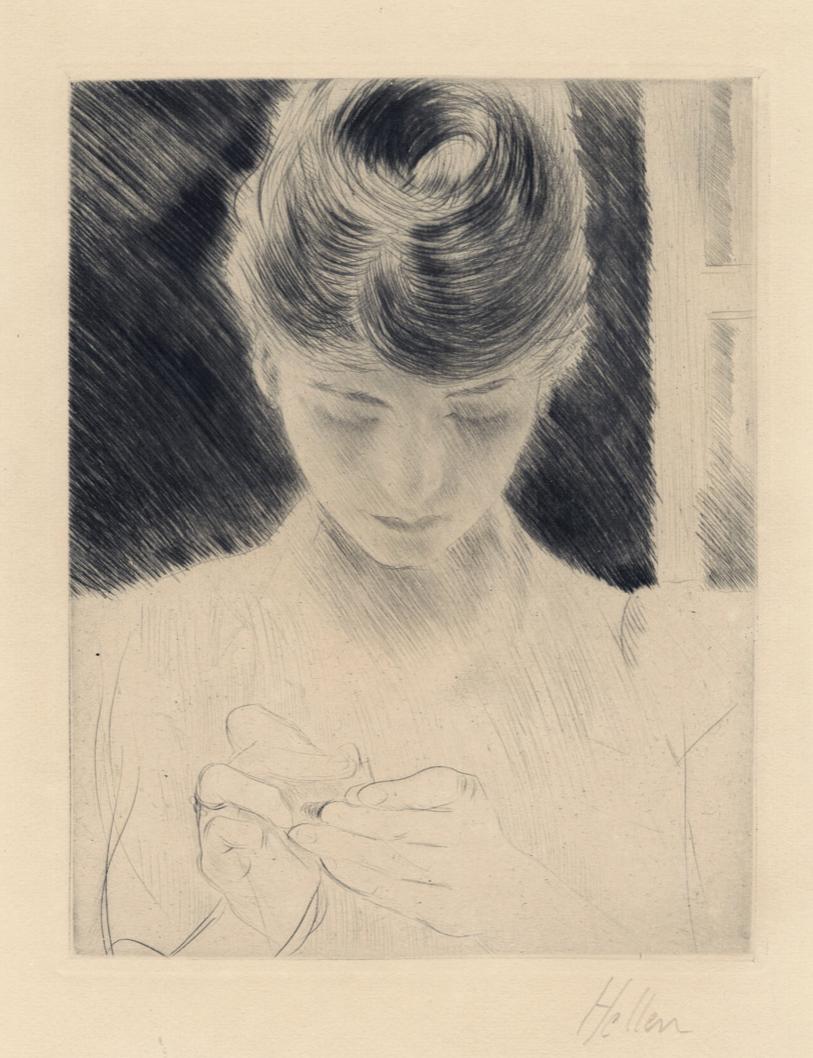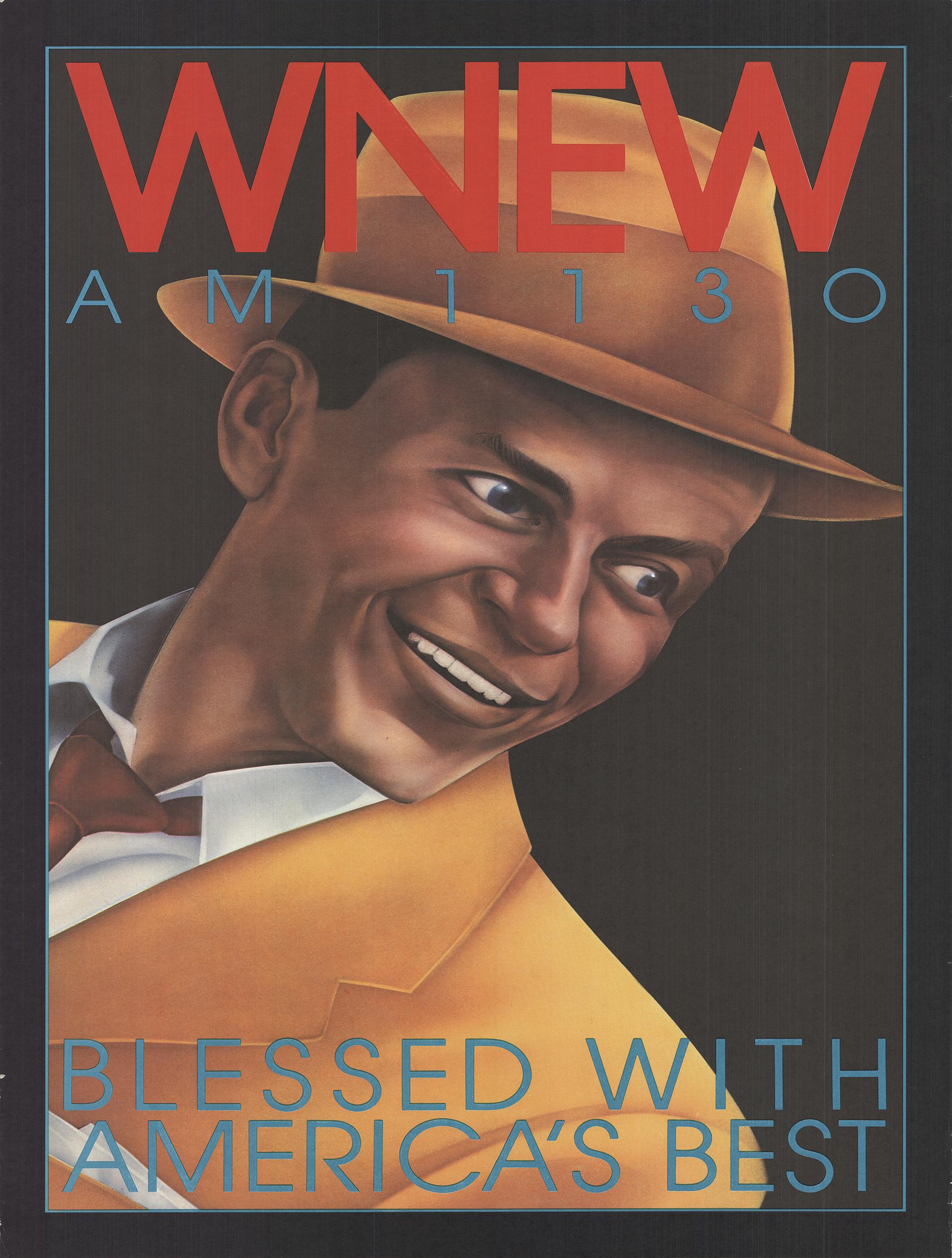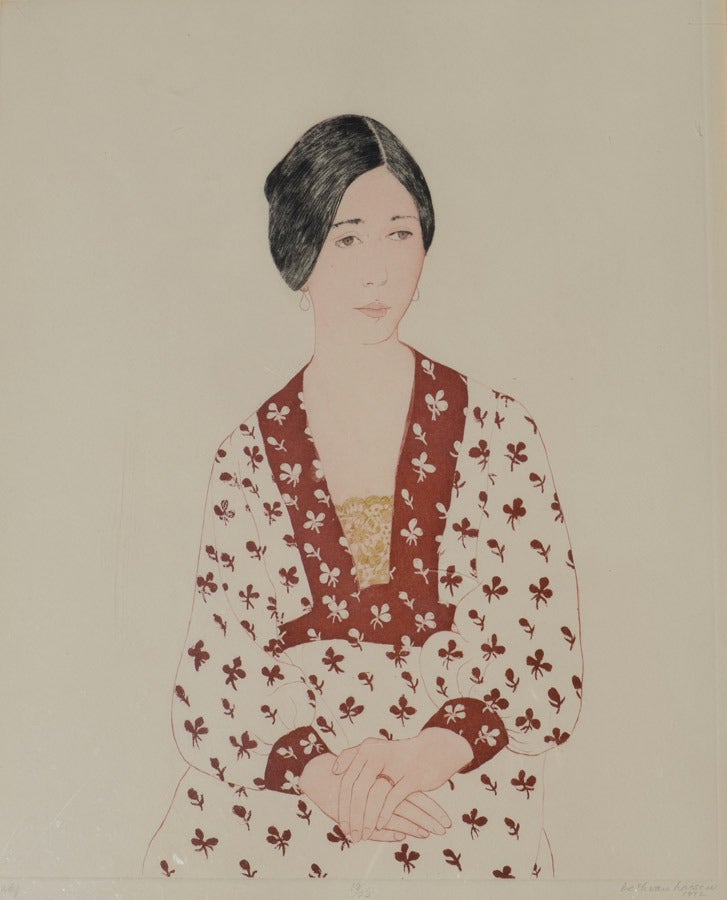Jim DineJim Dine Rimbaud, the Coffee Exporter poet portrait drawing in earth tone sepia 1973
1973
About the Item
- Creator:Jim Dine (1935, American)
- Creation Year:1973
- Dimensions:Height: 26 in (66.04 cm)Width: 19.5 in (49.53 cm)
- Medium:
- Movement & Style:
- Period:
- Condition:
- Gallery Location:New York, NY
- Reference Number:1stDibs: LU121125524332
Jim Dine
The Ohio-born artist Jim Dine brought his ever-shifting, multidisciplinary vision to New York in 1958, a time of transition in the American art world. Abstract Expressionism, which had dominated the scene for years, was on the wane, and a group of young artists, including Dine, Allan Kaprow, Jasper Johns and Robert Rauschenberg, was eager to replace it with a movement that flipped the traditional rules of art-making on their head.
Beyond dissolving the boundaries between mediums and genres, attaching found objects and detritus to their canvases, these revolutionaries began staging performative “happenings” in public spaces, redefining the very definition of a work of art. As Pop art took form, Dine used objects with personal significance, like his paintbrushes, to transform his paintings into two-dimensional sculptures. He was included in the Norton Simon Museum’s 1962 “New Painting of Objects,” often considered the first true Pop art exhibition in America, but he remained a chameleon, constantly changing his style, material and technique.
More than his contemporaries, Dine has forged new paths in drawing, scrawling words and names across the canvas to create graphic, abstract landscapes. He is obsessed by certain motifs — such as hearts and his own bathrobe — which recur in various forms throughout his oeuvre. He has occasionally worked in classical genres, such as portraiture, as exemplified by the 1980 aquatint Nancy Outside in July. He has also co-opted the bold, graphic vocabulary of advertising and commercials, as in the sleek 2010 composition Gay Laughter at the Wake.
Find Jim Dine prints and other art on 1stDibs.
- ShippingRetrieving quote...Ships From: New York, NY
- Return PolicyA return for this item may be initiated within 7 days of delivery.
- Vintage Hockney poster Celia Wearing Checkered Sleeves 1981 Chicago Art FairBy David HockneyLocated in New York, NYPrinted by Petersburg Press for their exhibition of David Hockney prints and drawings at the 1981 Chicago Art Fair, this beautiful poster reproduces Hockney’s drawing Celia Wearing Checkered Sleeves, 1973...Category
1980s Realist Portrait Prints
MaterialsLithograph
- Cap'n A.B Dick (A) gray fisherman portrait sou'wester hat R.B. Kitaj lithographBy Ronald Brooks KitajLocated in New York, NYKitaj’s drawing is of a fisherman in profile, wearing a sou’wester: a collapsible rain hat. The image is a wry portrait, ostensibly of Albert Blake Dick, ...Category
1970s Realist Portrait Prints
MaterialsLithograph
- Acrobats, Michele Zalopany. Black and white monotype painting landscapeBy Michele ZalopanyLocated in New York, NYIn this black and white monotype, Zalopany has captured a duo of tumblers atop a roof, as onlookers stare in wonder. The artist is able to cap...Category
1980s Realist Figurative Prints
MaterialsMonotype
- Vintage David Hockney poster Young Playwrights Festival 1982By (after) David HockneyLocated in New York, NYA masked performer gestures his hands, wearing bright green garb, a long hat, and jaunty black shoes with white socks. Hockney paints in loose strokes of color: garnet, sapphire, bright yellow, and emerald green. This vintage David Hockney...Category
1980s Realist Figurative Prints
MaterialsLithograph
- Vintage Hockney poster Kammer 1981 Celia in a Black Dress and Red StockingsBy David HockneyLocated in New York, NYPrinted for Galerie Kammer’s 1981 David Hockney exhibition “Drawings and Prints”, this beautiful poster reproduces Hockney’s drawing Celia in a Black Dress and Red Stockings 1973. Fa...Category
1980s Realist Portrait Prints
MaterialsLithograph
- David Hockney portrait drawing vintage Exhibition poster Graves Art Gallery '80By (after) David HockneyLocated in New York, NYThe portrait of the David Hockney’s mother featured on this vintage David Hockney poster is currently on view at the National Portrait Gallery’s exhibition David Hockney: Drawing from Life. This poster was created for the exhibition 'Hockney's Progress: Paintings, Drawings, Prints, Theatre Designs', held at the Graves Art Gallery in Sheffield, 19 September...Category
1980s Realist Figurative Prints
MaterialsLithograph
- Balaclava - The target in sight -Located in Berlin, DEHeinrich Haberl (1869 Passau to 1934 Munich), Sturmhaube, c. 1900. drypoint, 14 x 10 cm (platemark), 28 x 21 cm (sheet size), 39 x 29 cm (passe-partout), titled "Sturmhaube" in lead at lower left and inscribed "Kaltnadelradierung", signed and locally inscribed "Heinrich Haberl Mchn. [Munich]" at lower right, inscribed again in lead on verso and with old collection stamp. - slightly darkened, fixed and mounted - The target in sight - About the artwork The theatrical "role-portrait" is to be seen against the background of the Rembrandt cult, which reached its climax at the end of the 19th century. The soldier seems to have stepped straight out of Rembrandt's Night Watch (1642) to fix something outside the picture with an alert and ready gaze. The steeply rising brim of the morion frames the gaze and thus perspectivises it as the actual 'pictorial action'. The gaze represents both the vigilant defence and the visionary goal of the battle. Not only the subject, but also the style of the etching needle reflect Rembrandt's understanding of the times. Strong contrasts of light and dark are created in a virtuoso free stroke, without losing the effect of the reflections on the helmet and in the eyes. This shows a kinship with the early prints of Lovis Corinth, who also saw himself as an artist in the role of the knight. Against this background, Haberl's picture can also be seen as a representation of his artistic self-image. About the artist Heinrich Haberl first attended the art school in Nuremberg and from 1892 studied at the Munich Academy. There he was a master student of Johann Leonhard von Raab, Rudolf von Seitz, Franz von Defregger...Category
Early 19th Century Realist Figurative Prints
MaterialsEtching
- General Wilhelm von Blume - Visionary retrospective -Located in Berlin, DEBernhard Pankok (1872 Münster - 1943 Baierbrunn), General Wilhelm von Blume, 1915, aquatint etching, 34 x 29.5 cm (sheet size), 26 x 22 cm (plate size), signed in the plate at upper left, in pencil at lower right and dated in pencil at lower left. - At lower left old collection stamp, at the right broad margin with a small spot, otherwise very good condition. About the artwork The 1915 aquatint etching of General Wilhelm von Blume is based on a 1912 oil painting in the LWL-Museum für Kunst und Kultur in Münster. A second oil portrait of the general by Pankok is in the Staatsgalerie Stuttgart. When Pankok painted the first oil portrait in 1912, the general had already been retired for 16 years. It is therefore a retrospective portrait. Accordingly, the orientation of his head is such that he is looking back in both the oil painting and the etching. Without fixing on anything in particular, he looks thoughtfully inwards and reflects on his life. Uniformed and highly endowed, it is his military activities in particular that he is reviewing attentively and, as his gaze reveals, quite critically. Pankok has literally written the sum of his experiences on Wilhelm von Blume's face: The physiognomy is a veritable landscape of folds, furrows, ridges and gullies, all the more striking against the flat background. It is clear that each of the medals was also won through suffering. However, by breaking the boundaries of the picture, his bust appears as an unshakable massif, which gives the general a stoic quality. The fact that the design of the portrait was important to Pankok can be seen from the different versions, the present sheet being the third and probably final revision, which Pankok dates precisely to 18 February 1915. Compared with the previous state, the light background now has a dark area against which the sitter's face stands out, the dark background in turn combining with the uniform to create a new tension in the picture. Pankok's taking up of the portrait of the high-ranking military veteran and its graphic reproduction can also be seen in relation to the First World War, which had broken out in the meantime. In the face of modern weapons of mass destruction, Wilhelm von Blume's warfare and military writings were relics of a bygone, more value-oriented era. About the artist After studying at the Düsseldorf Art Academy from 1889 to 1891 under Heinrich Lauenstein, Adolf Schill, Hugo Crola, and Peter Janssen the Elder, Bernhard Pankok went to Munich in 1892, where he worked primarily as a graphic artist for the two major Jugendstil magazines "Pan" and "Jugend," which established his artistic success. Through this work he met Emil Orlik, with whom he had a lifelong friendship. In 1897, he exhibited his first furniture, and in 1898, together with Richard Riemerschmid, Bruno Paul and Hermann Obrist...Category
1910s Realist Portrait Prints
MaterialsEtching
- Jeune Femme Cousant; Madame Helleu (Young Woman Sewing, artist's wife)By Paul César HelleuLocated in Middletown, NYParis: Gazette des Beaux Arts, 1892. Etching and dry point on cream laid paper. 7 9/16 x 5 7/8 inches (191 x 148 mm), full margins. Signed in pencil, lower right margin. A dark, ink...Category
Late 19th Century Realist Portrait Prints
MaterialsDrypoint, Etching
- WNEW Frank SinatraLocated in Brooklyn, NYPaper Size: 45 x 29.5 inches ( 114.3 x 74.93 cm ) Image Size: 41.75 x 26.75 inches ( 106.045 x 67.945 cm ) Framed: No Condition: B: Very Good Condition, with signs of handling or age...Category
Mid-20th Century Realist Figurative Prints
MaterialsOffset
- JudyBy Beth van HoesenLocated in West Hollywood, CAA magnificent original lithograph by American artist Beth van Hoesen. Noted as a master printmaker, van Hoesen exhibited at the de Young Memorial Museum, San Francisco; Achenbach ...Category
1970s Realist Figurative Prints
MaterialsLithograph
- YOUNG WOMAN RED VEST Signed Lithograph, Standing Woman Hair Up, Green DressBy Raphael SoyerLocated in Union City, NJYOUNG WOMAN RED VEST is an original hand drawn (not digitally or photo reproduced) limited edition lithograph by the artist Raphael Soyer - Russian/American S...Category
1970s Realist Portrait Prints
MaterialsLithograph






